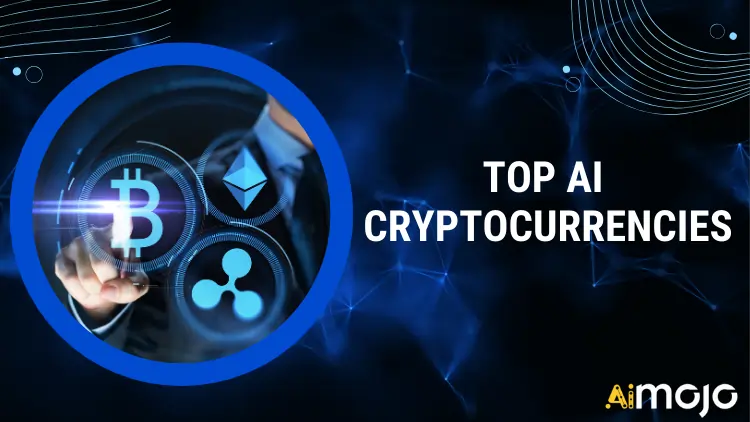
As the global market for digital assets continues to surge, the intersection of AI and blockchain technology is moving to a new phase of innovation. With a compounded annual growth rate of 54.7% between 2021 and 2026, AI in the cryptocurrency market is expected to reach $4.94 billion.
By leveraging AI's predictive capabilities, data analysis, and algorithmic trading, AI cryptocurrencies are redefining the landscape, offering enhanced security, efficiency, and personalized user experiences.
As we explore more on AI-powered digital currencies, it becomes evident that the fusion of these two advanced technologies holds immense promise for the future of finance.
How does AI Cryptocurrency work?
AI cryptocurrencies function by integrating advanced artificial intelligence (AI) algorithms and machine learning models to provide innovative solutions and data-driven insights.
They interact within the ecosystem by empowering blockchain projects and transactions and augmenting trading decisions.
For example, some AI coins are used for services such as providing decentralized cloud computing services or offering predictive models for crypto trading.
These coins act as native Crypto tokens within the blockchain platform, enabling network participants to access and utilize AI-powered services.
Additionally, certain AI cryptocurrencies are designed to bear yield, enabling Crypto users to earn passive income by staking or providing liquidity. These coins work within the DeFi ecosystem, generating rewards based on the underlying smart contracts and protocols.
Top AI Cryptocurrencies Available in the Market
| AI Cryptocurrencies | USP | Market Capitalization (Jan 24) |
|---|---|---|
| 1. Phala Network | Provides a decentralized off-chain compute infrastructure, enabling verifiable computation for Web3 with on-chain verification and off-chain capability. | $63,307,809 |
| 2. Fetch.ai | Transforming legacy systems to be AI-ready without changing existing APIs, and connecting multiple integrations to create new services. | $278,668,030 |
| 3. Cortex | The first decentralized world computer for AI and AI-powered dApps on the blockchain, promoting an open-source AI research and development ecosystem. | $3,263,605 |
| 4. The Graph | Ability to provide a decentralized indexing protocol for Web3, enabling developers to build and publish open APIs, known as subgraphs, that applications can query using GraphQL. | $948,624,760 |
| 5. Ocean Protocol | Provides a decentralized platform for data sharing, protection, and monetization, enabling users to use AI and machine learning without relocating their assets. | $202,412,789 |
| 6. Render Token | A decentralized GPU rendering platform providing cost-effective and high-speed solutions for next-generation 3D content creation and artificial intelligence. | $880,246,763 |
| 7. SingularityNET | It is the world’s leading decentralized AI marketplace, running on blockchain, focused on the development of Artificial General Intelligence (AGI) for a beneficial technological Singularity. | $278,101,004 |
| 8. Hera Finance | Offers an AI-powered, multichain DeFi aggregator that offers the best swap rates, multi-hop routes, trade splitting, zero-slippage, and a governance token, while spanning the entire crypto assets ecosystem for maximum return to users. | $20,223,627 |
| 9. Oasis Network | It is the world's first scalable, privacy-enabled blockchain platform for open finance and a responsible data economy. | $336,910,226 |
| 10. dKargo | Offers innovative blockchain-based services for secure, transparent, and efficient transactions among participants. | $93,590,300 |
| 11. iExec RLC | Provides a decentralized marketplace for cloud resources, combining blockchain and confidential computing to enable direct, privacy-preserving trading of computing assets. | $79,278,543 |
| 12. Alethea AI | Combine Generative AI and Blockchain to create decentralized ownership and democratic governance of AI. | $51,959,755 |
| 13. Covalent | Offers Unified API for fast, scalable historical blockchain data across 150+ chains. | $87,629,875 |
1. Phala Network
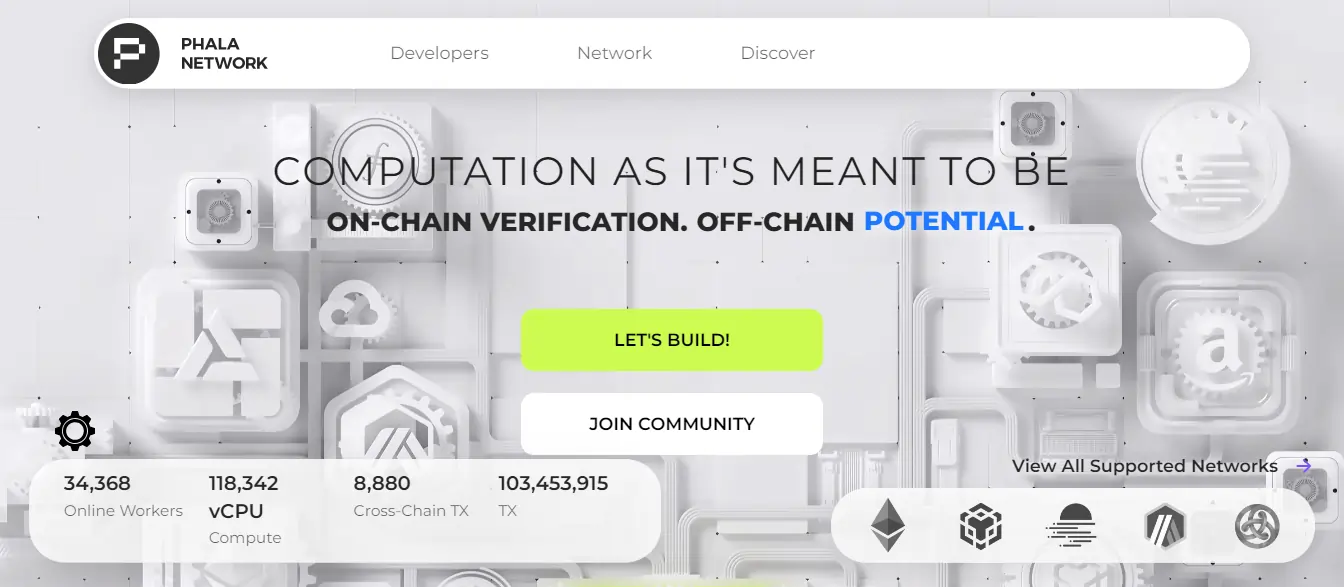
Phala Network is an AI-augmented blockchain platform that focuses on privacy and decentralized cloud computing. The system is designed with multiple layers of security guarantees to ensure fully verifiable computation. The network is supported by decentralized workers and a substantial number of staked tokens.
Phala Network Key Features:
Phat Contracts are protected by both hardware Secure Enclaves and cryptographic evidence published and verified on the Phala blockchain, seamlessly extending blockchain-level security to the off-chain realm.
The network also supports cross-chain transactions, making it interoperable with other blockchain networks like Ethereum, Bnbchain, Moonbean, Arbittrum, and Astar.
Phala Network has a no-code developer experience called Phat Bricks. It uses pre-written, audited Phat Contracts to create Blueprints that can be integrated with Smart Contracts quickly. This feature speeds up development and allows developers to scale their ideas with prebuilt blueprints.
Phala Network also allows for easy asset transfer between blockchains while maintaining confidentiality, making it ideal for developers creating dApps with cross-chain capabilities.
Additionally, Phala Network has a marketplace of blueprints that are ready to deploy and allow for quick integration of off-chain capabilities into smart contracts. This simplifies the development process and customizes it as per developers' needs.
2. Fetch.ai
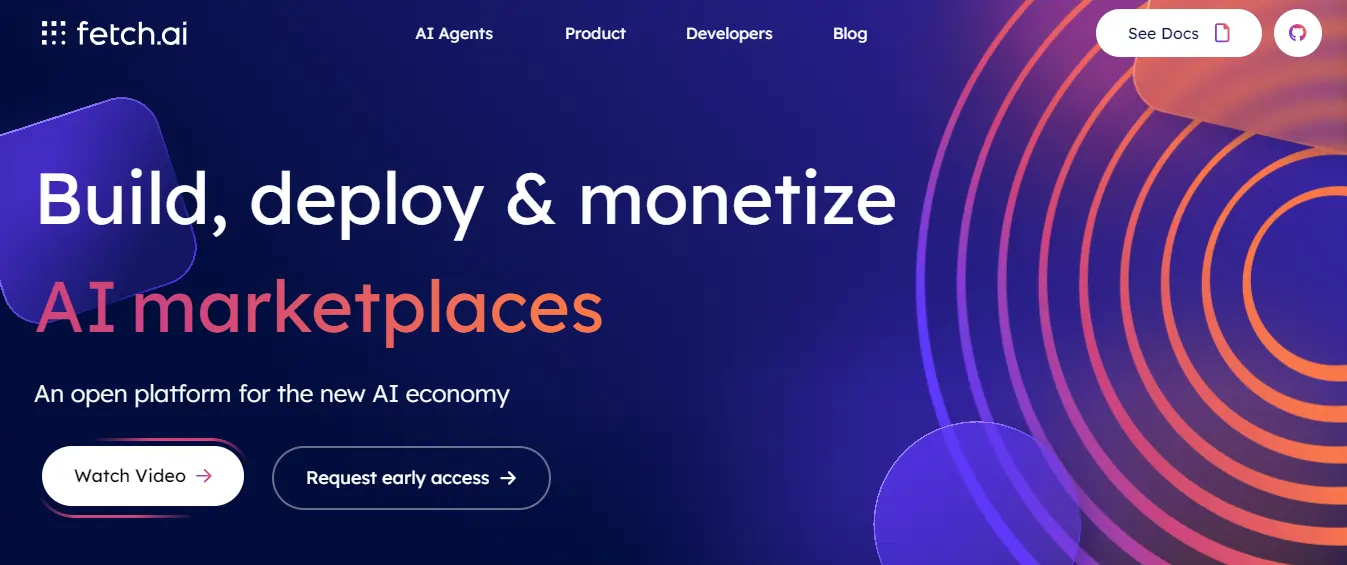
Fetch.ai utilizes artificial intelligence to facilitate the exchange of data, services, and value among autonomous economic agents. The platform is built on a blockchain network and uses its native token, FET, as the primary medium of exchange.
Its purpose is to automate a range of tasks and services across various industries and domains, resulting in a collective intelligence that can enhance outcomes and generate value.
Fetch.ai's platform is based on Autonomous Economic Agents. These agents are digital entities that represent various elements. They can make decisions for themselves and others. AEAs can perform a variety of tasks, including data analysis and financial transactions.
Fetch.ai uses CoLearn, a decentralized machine learning protocol, to share data and models securely without compromising privacy. CoLearn is implemented using CosmWasm, a high-performance smart contract language on the Fetch.ai Ledger.
Fetch.ai agents can access data and services from various platforms, including Ethereum and BNB Chain to swap FET tokens with other cryptocurrencies. This enhances the utility and reach of the Fetch.ai network.
Furthermore, Users have the option to stake FET to participate in securing the network through the Proof-of-Stake consensus mechanism. As a result, they can earn rewards for their contributions to validator nodes.
3. Cortex
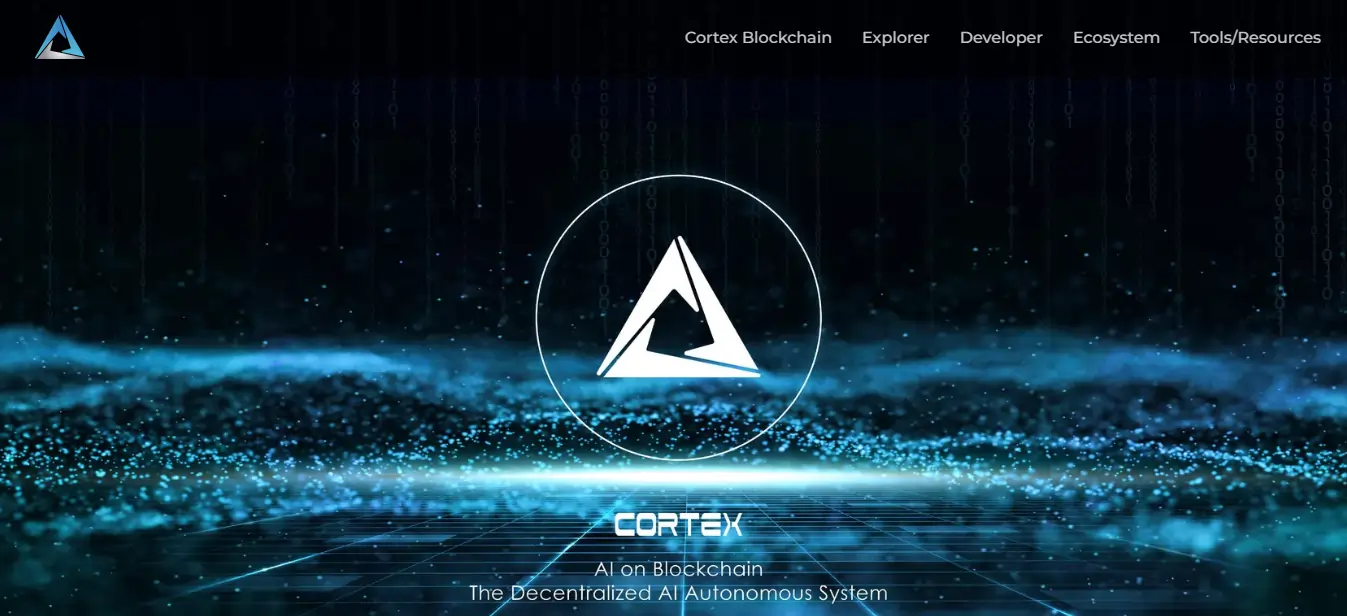
Cortex is an AI-powered blockchain platform that democratizes AI through its open-source and peer-to-peer decentralized platform.
It is the first decentralized world computer capable of running AI and AI-powered decentralized applications (dApps) on the blockchain.
Cortex Key Features:
The Cortex Virtual Machine is EVM-compatible and supports on-chain AI inference using GPU instead of CPU. This inferences machine learning inference on the Cortex blockchain and integrates ML models into smart contracts and dApps.
Synapse is an inference engine that gives the same AI results across different computing environments, allowing for on-chain AI inference without the need for off-chain solutions.
Cortex aims to create an open-source community where AI researchers and developers are motivated to share their models. This solves a major challenge for blockchains like Bitcoin and Ethereum – on-chain AI execution.
ZkMatrix is a Layer2 Solution on Cortex Blockchain that uses zkRollup technology to increase transaction speed and reduce fees.
4. The Graph
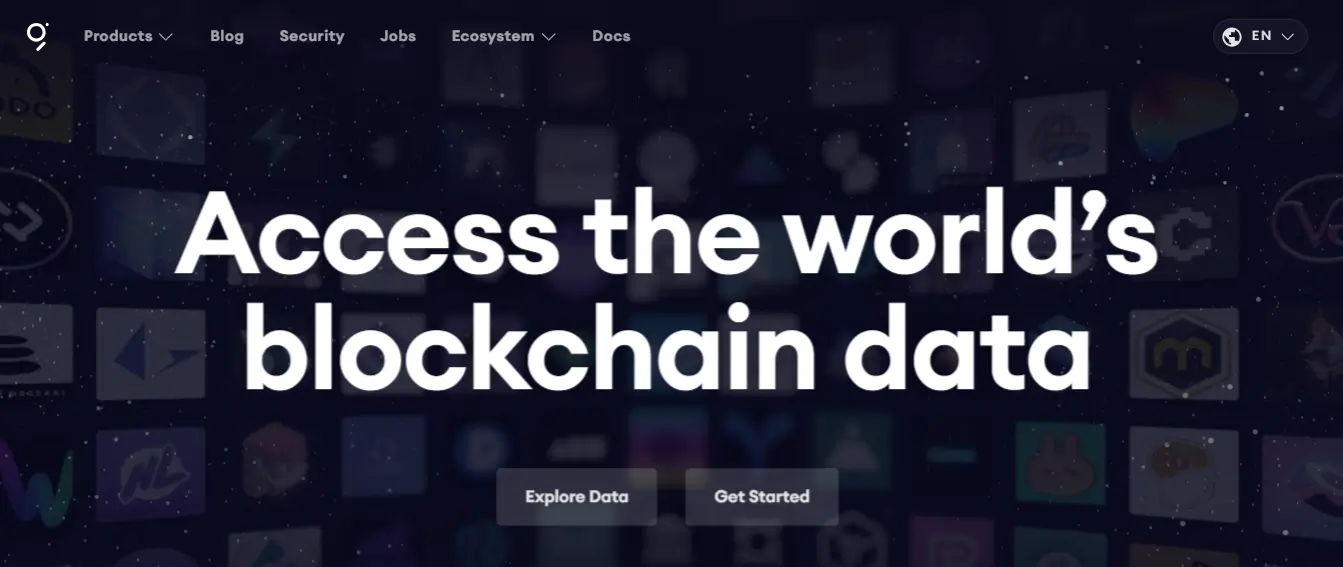
The Graph is an open-source protocol that is important in the Web3 ecosystem as it indexes and queries data from blockchains, specifically Ethereum.
It helps streamline and speed up the process of getting important information from decentralized networks.
The Graph is known as the “Google of Blockchain” because it efficiently organizes and provides easy access to blockchain data.
Subgraphs on The Graph are APIs that provide fast access to indexed blockchain data, benefiting developers and data consumers. Many developers depend on The Graph for superior user experiences.
The native token of The Graph protocol is GRT. It serves to incentivize and reward various network participants, such as indexers, curators, and delegators. Additionally, GRT functions as a governance token to vote on network upgrades and change proposals.
The Graph uses a globally distributed network of contributors to ensure constant application uptime and uninterrupted data flow. This enhances the resilience and reliability of The Graph for data access.
The Graph supports indexing data from a wide range of networks, including Ethereum, NEAR, Arbitrum, Optimism, Polygon, Avalanche, Celo, Fantom, Moonbeam, IPFS, Cosmos Hub, and PoA.
5. Ocean Protocol

Ocean Protocol is an open-source protocol that utilizes blockchain technology and artificial intelligence to establish a secure and transparent marketplace for the sharing of data.
The platform uses a decentralized crypto platform for secure transactions and data privacy. It tokenizes datasets and data services, allowing providers to monetize data efficiently and consumers to access valuable data in one place.
Data NFTs use ERC725y technology to protect intellectual property and provide customized access to data, web services, or digital assets. They have features like self-custody, encrypted storage, access controls, and fractionalization.
Datatokens protect Data NFTs and control access to information based on preferences. Each Data NFT can generate one or more datatokens with features like whitelisting, pricing, promotions, fractionalization, and expiration.
Compute-to-Data allows users to remotely use machine learning and AI without moving their assets, creating new ways to make money. It includes encryption, royalty distribution, and algorithms allowlist.
Ocean Protocol uses OCEAN as its native token for incentives, transactions, governance, and staking on data.
6. Render Token

The Render Token is a utility token used as the main form of exchange on the Render Network, a decentralized platform offering GPU-based rendering solutions.
The network connects node operators and artists/developers, facilitating the monetization of idle GPU compute power and the scaling of intensive 3D rendering work and applications to the cloud.
When a creator submits a rendering job to the Render Network, it is divided into smaller tasks and given to Node Operators based on their reputation and tier. Node Operators use their GPUs to process the tasks and send the results back to the Render Network. Node Operators earn RNDR tokens for completing rendering tasks, and the distribution is based on factors like computational power, supply and demand, and electricity costs.
On the Render Network, all transactions are in RNDR tokens, which are used by Creators to pay for on-demand GPU computing from Node Operators.
The Render Network uses computational power to complete VFX/3D rendering services. Users have unique identifiers tied to their Octane Render accounts, which are verified to prevent fraud and duplicate accounts.
7. SingularityNET
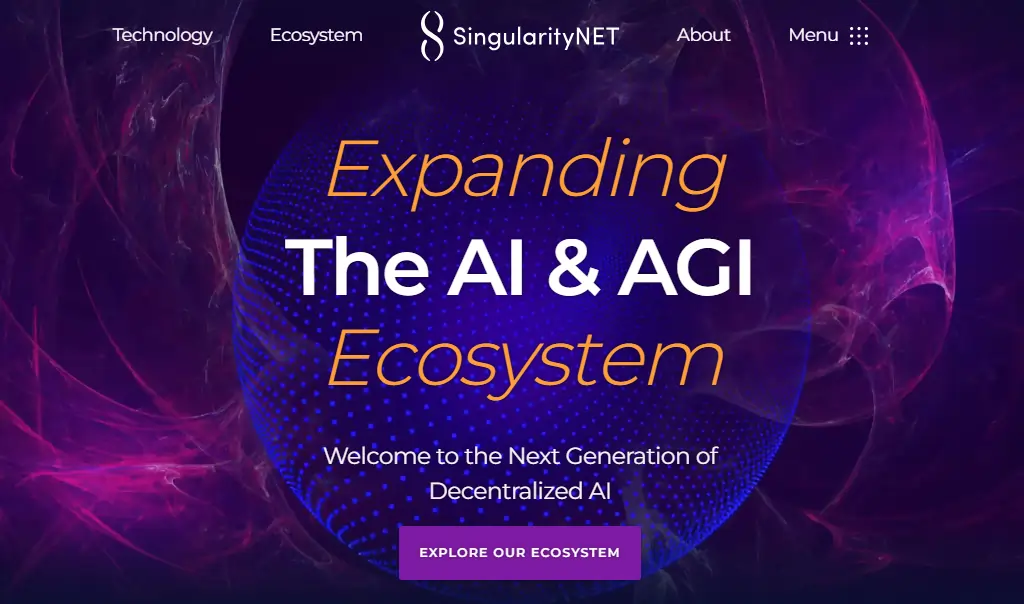
SingularityNET is an AI marketplace that operates on blockchain technology. Its goal is to democratize AI technology by decentralizing it through emerging blockchain technology, ensuring a fair distribution of power, value, and technology globally.
SingularityNET has an AI Marketplace and AI Publisher where users can search, try, and choose from a growing library of AI algorithms made by service providers. It serves as a central hub for creating, editing, and managing AI services and launching them globally.
SingularityNET uses blockchain technology to manage transactions in a machine intelligence economy. It provides smart contract templates for AI agents to request and exchange data, as well as supply AI work results.
SingularityNET uses the AGIX utility token for transactions and community governance. AGIX token holders have a say in decision-making. The token works on Cardano and Ethereum. The AGIX Community can stake their tokens and get rewarded for contributing to platform liquidity.
8. Hera Finance
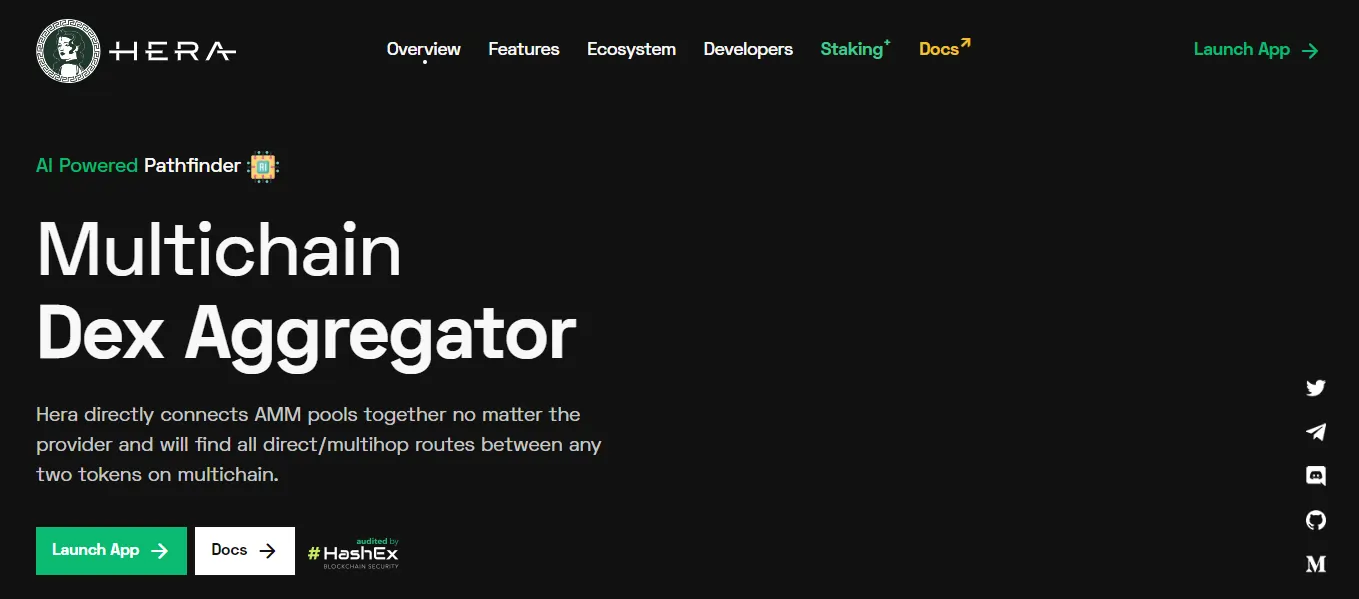
Hera Finance is a decentralized exchange aggregator that utilizes AI technology to connect various Automated Market Maker pools and discover the most efficient routes between different tokens on multiple chains. It offers a diverse range of tokens and provides seamless connectivity between different providers.
Hera Finance offers the AI-powered Pathfinder algorithm, which is unique in its ability to be developed, and re-programmed, and has self-learning capabilities. This algorithm assists users in finding the most optimal routes for token swaps, maximizing trading outcomes for any pairs.
The Hera Guard ensures accurate transfer of the displayed amount on the swap screen to the user's wallet, without any slippage or specified tolerance.
Moreover, Hera Finance has a utility token called the HERA token. It is used for voting and other protocol areas, and holders can also earn a share of the protocol revenue.
9. Oasis Network

The Oasis Network is a blockchain platform that prioritizes privacy and is specifically designed for Web3 applications. It operates as a Layer 1 proof-of-stake decentralized network and caters to decentralized finance and a responsible, user-owned data economy.
The Oasis Network is scalable and adaptable, supporting various computing environments and accommodating new technology developments and use cases as the blockchain industry evolves.
The Oasis Network is known for its low gas fees and offers 1000 transactions per second, compared to Ethereum's 13 transactions per second, along with considerably lower gas fees.
The ROSE token serves as the native token for gas fees, governance, and staking on the Oasis Network. It is utilized for all transactions, staking, and delegation on the network.
10. dKargo

dKargo is an AI crypto project that uses blockchain technology to transform the logistics and supply chain sector by creating an efficient and collaborative network.
dKargo offers logistics services based on Web3 technology, allowing new and improved logistics solutions from the beginning to the end of the delivery process.
Additionally, it provides an open logistics platform that offers enhanced logistics information and routes that were previously unavailable due to existing silo structures.
dKargo's D-Pool efficiently tracks and manages product information in the logistics and distribution sectors from start to finish, guaranteeing the reliability of the product information.
The platform makes work easier by offering a one-stop service application and contract process using blockchain. This allows corporate e-commerce companies to start using the service right away.
dKargo's Declip is a virtual asset management system that allows users to pay for services using virtual assets and existing currencies within the Depool service, without an external wallet. Declip also integrates and manages virtual assets from various services like rewards and purchases.
dKargo's Discanner is a big data platform that offers transparent logistics flow tracking and management, providing valuable insights to logistics participants.
11. iExec RLC
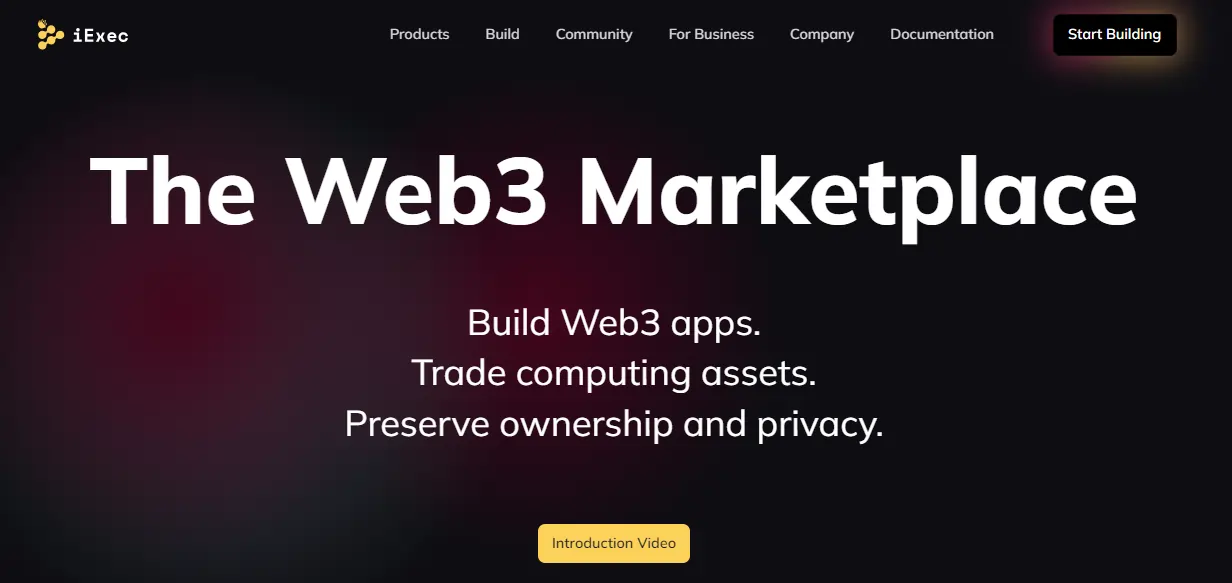
iExec RLC is a blockchain platform that lets users trade computing power and buy/sell cloud computing resources while keeping privacy and ownership rights.
It's a cloud computing platform on the Ethereum blockchain that connects resource providers with users, allowing anyone to monetize and rent out their computing power.
The platform uses RLC cryptocurrency for all transactions and as a security deposit for workers.
The proof-of-contribution consensus algorithm connects the platform's XtremWeb-HEP distributed computing infrastructure with its decentralized cloud services marketplace, building trust among participants.
iExec RLC uses secure enclaves and cryptography to protect data and ensure privacy. It offers a secure and affordable solution for off-chain computation.
Furthermore, iExec RLC provides additional functionalities like a dApp store, Data Marketplace, and Cloud Marketplace, which enhance its accessibility to a wider range of users and developers in the cryptocurrency market.
It has an “iExec Oracle Factory” that allows users to create or use decentralized oracles.
12. Alethea AI

Alethea AI is a research and development studio that operates at the intersection of Generative AI and Blockchain technologies.
Alethea AI developed CharacterGPT, the first Multimodal AI system to generate interactive AI characters from descriptions. Users can create customizable AI characters for different roles and tasks.
Artificial Liquid Intelligence is a token that is important for the Alethea AI ecosystem. It helps to regulate and enable transactions between participants of the AI Protocol.
AI characters are stored on the blockchain, which proves ownership. Owners can control and customize the AI characters' knowledge base. The AI characters can own and trade AI assets on The AI Protocol. They can also upgrade their intelligence and be trained on specific data.
The AI characters can be used across different dApps on The AI Protocol, allowing them to be utilized throughout the ecosystem and providing a diverse user base for dApps.
13. Covalent
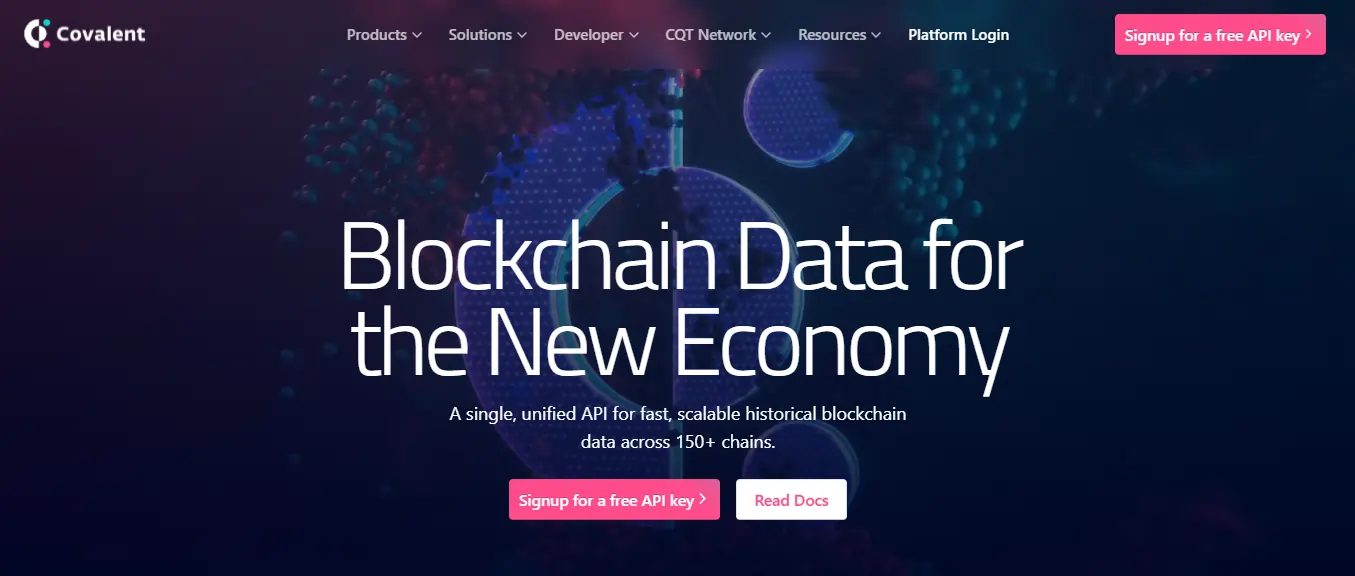
Covalent is a data aggregator that collects information from various blockchains, such as Avalanche, Ethereum, and Polygon, offering a unified API for efficient and scalable historical blockchain data across over 150 chains.
Covalent decodes and classifies events, making it easy for developers to understand transaction data, saving time and reducing complexity.
Covalent offers extensive blockchain coverage in Web3, encompassing token balances, NFTs, and historical transactions.
The CQT Network offers developers unrestricted access to historical blockchain data, ensuring long-term data availability.
Future Prospects of AI Cryptocurrencies
The integration of artificial intelligence (AI) and blockchain technology is expected to significantly advance the cryptocurrency market. AI algorithms can provide predictive analytics to forecast price fluctuations, identify investment opportunities, and automate trading strategies.
This will lead to more efficient crypto markets and potentially higher returns for investors. However, the volatility and complexity of cryptocurrencies pose challenges for AI models which require robust datasets and computing power. Regulations around AI and crypto remain unclear.
Overall, AI has immense potential to enhance security, efficiency, and profits in crypto trading but its effectiveness depends on overcoming limitations like data quality issues and market unpredictability. With continued advancement in AI, it is likely to become an integral part of mainstream cryptocurrency adoption.
FAQs on AI Cryptocurrencies
How does AI impact the Cryptocurrency market?
AI improves security, trading, mining, market forecasting, risk management, and fraud detection. It analyzes data for optimal trading decisions, enhancing cryptocurrency transaction safety.
What are the benefits of using AI Cryptocurrencies?
AI cryptocurrencies provide robust risk management tools and facilitate 24/7 market monitoring, making investment decisions more informed and potentially profitable.
What are the risks associated with AI Cryptocurrencies?
Using AI Cryptocurrencies carries risks such as market volatility, regulatory gaps, cybersecurity threats, and stablecoin concerns. Cybersecurity is a major concern due to increased cyberattacks on financial entities involving cryptocurrencies.
How does AI and blockchain affect Cryptocurrencies?
AI and blockchain technologies work together to make crypto transactions more secure, efficient, and trustworthy, while also unlocking new opportunities for the industry.
Summing Up
AI in the world of cryptocurrencies has proven to be a game-changer. According to recent data, the integration of AI technology has significantly enhanced the efficiency and security of transactions, reducing processing times by an impressive 40%.
With its predictive analytics capabilities, AI has also empowered traders to make more informed investment decisions, leading to an overall increase in profitability by approximately 25% within the first year of implementation.
As AI continues to evolve, its impact on the cryptocurrency market is expected to grow exponentially, shaping the future of digital asset trading.















